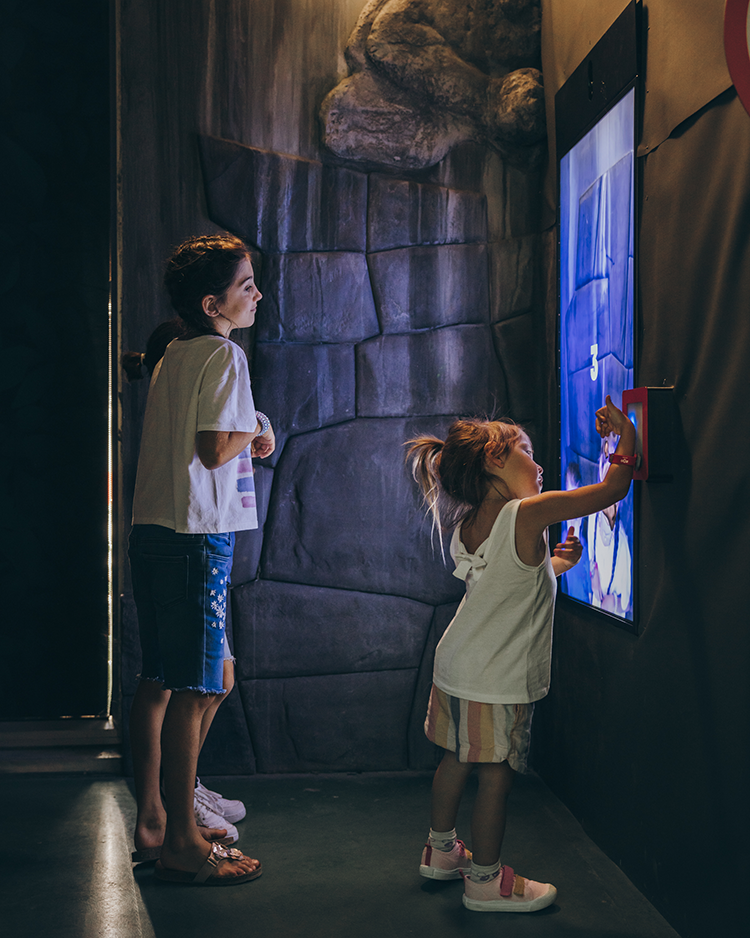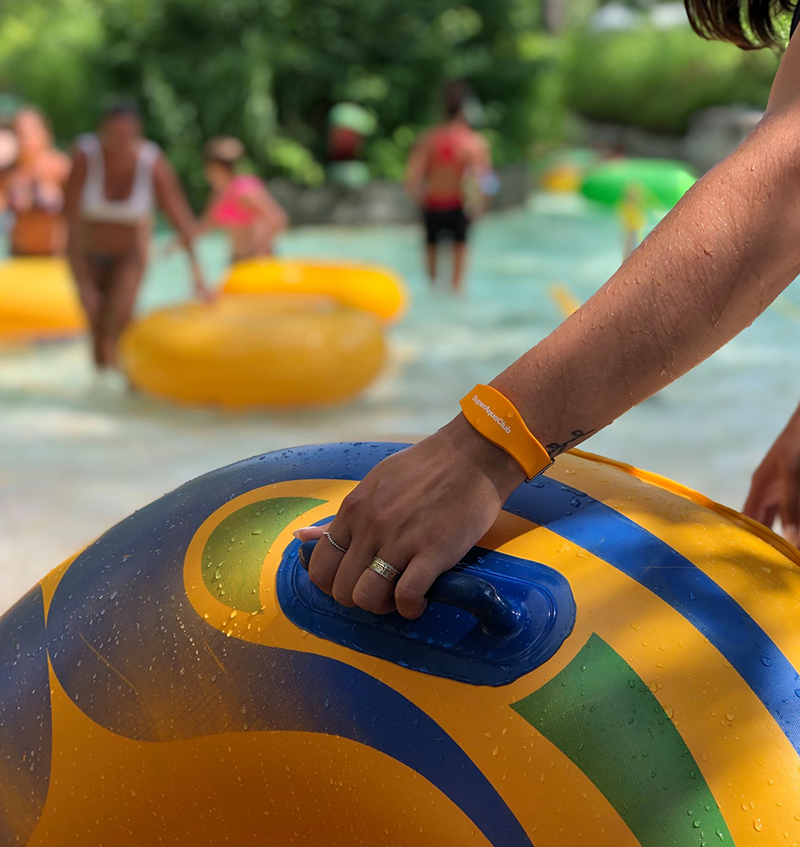Timing is everything. In spring 2017, Connect&GO—a Montréal-based startup that provides connected wearables—pivoted from the events and entertainment sectors to the leisure industry. Little did the company know that in just a few years, COVID-19 would ravage the world, essentially canceling (or at least pausing) in-person events. But by the time the pandemic hit, Connect&GO had quickly ramped up its focus on the attractions industry—from 40% of its business during the first year, up to 60% by the second year, and now 96% of its business by 2021. While the company pivoted for a variety of reasons, it couldn’t have predicted that a global pandemic could have sent its events-focused business into a death-spiral. The perfectly timed move into a leisure-focused business certainly helped the company better navigate the pandemic—but how did the supplier succeed in the industry so quickly?
A History of Guest Experience Focus
Founded 10 years ago, Connect&GO focused on the events and entertainment industry, providing radio frequency identification (RFID) technology to enhance visitor experience and manage site capacity in real time. Connect&GO spent the first seven years involved in some of the largest events in the world, including the Super Bowl, the Olympic Games, the PGA tournament, and Comic-Con.
“We were doing access control, cashless payments, and sponsored activations through wristband technology,” explains Anthony Palermo, the company’s co-founder. “We didn’t do ticketing, but we did everything else that involves participants’ on-site experience.”
That included doing all background checks and credentials for anyone involved in the event (such as staff, speakers, and sponsors), as well as handling on-site guest experiences.
For example, once guests arrive at an event, they receive a RFID wristband, which would provide access into the zone they paid for. Guests link their credit card to their wristband, which then becomes their payment method for additional event products or services. So, if Coca-Cola is one of the sponsors, and the event features roaming photographers, guests would use their wristband to get their picture taken and then receive a branded photo of themselves at the event with the Coca-Cola logo on it. The company felt like it was doing very well. Then along came Fyre Festival in 2017.
This disastrous luxury music festival in the Bahamas sold millions in ticket sales but failed to deliver on the experience, with problems related to accommodations, food, security, medical services, and musical talent. The event was eventually cancelled, followed by multiple lawsuits accusing the event organizers of defrauding investors, vendors, and guests.
Though Connect&GO had nothing to do with the scandal, company executives took a step back to reflect on their business model.
“We realized we had too many eggs in this basket, and we pivoted,” Palermo says.
Connect&GO asked a couple of key questions before moving in a new direction, like “Could any of our product or industry experience be applicable to family experiences and family entertainment?” and “What happens when the guest arrives on property?” Connect&GO decided to focus on what it had been really good at from the company’s inception—enhancing the guest experience.
Repositioning Existing Products for Leisure Market
“We jumped to IAAPA and became very active to establish ourselves,” Palermo explains, noting that Connect&GO was very well known in the entertainment industry but not at all in the attractions industry. The company quickly positioned itself as an innovative leader, highlighting its experience with RFID technology.
“We had developed these really cool, engaging programs, such as scavenger hunts, missions, immersive activities, and photo triggers,” Palermo says.
As Connect&GO began to switch its focus to attractions, it tweaked its products to reflect the family market. Then along came the pandemic.
COVID-19 gave Connect&GO the chance to pause, rethink, and retool.
“With events cancelled, it allowed us to take advantage of this time to recode our platform from scratch—but do it from the perspective of a property manager, instead of an event organizer.”
To truly understand how property operators look at things, Connect&GO hired industry staff—people who worked at water parks, amusement parks, family entertainment centers, and zoos. With the help of these “insider insights,” Connect&GO redeveloped its event-based products.
“We always kept in mind that what made us different was that we were so guest-experience focused,” Palermo notes. The result? Two new versions of what the company had first successfully done years before:
• Konnect: Natively integrated with RFID wearables, this omnichannel tech tool allows facility operators to run all aspects of their attraction on a single platform. Konnect handles the “unsexy,” operational part of the property, including ticketing, waivers, e-commerce, point of sale (POS), payments, access control, and guest analytics.
• Play&GO: This provides the guest experience engine that boosts guest engagement and loyalty, as well as revenue. This all-in-one platform handles gamification, experiential activations, and activities, driving new revenue opportunities by adding more value to the customer journey.
While operators can run either of these platforms alone, they’re more powerful together. Working in tandem, Konnect and Play&GO create a seamless, end-to-end guest experience that generates secondary revenues, increases spend-per-head, and maximizes engagement.
A Unicorn in the Leisure Industry
While completing its pivot during the pandemic, Connect&GO felt it had a “unicorn” with its Play&GO solution—a rare product not typically found in a leisure industry or market. Play&GO incorporates all of the fun, highly engaging guest elements that worked so well in the events and entertainment industry, such as guest missions, scavenger hunts, games, photo and video opportunities, and point systems with leaderboards. It even includes some new components, such as educational opportunities. And by increasing the number of touchpoints before, during, and after guests’ visit, owners and operators of facilities can enhance guest loyalty.
Case in point: At Quebec-based Granby Zoo, guests can add collectible, interchangeable animal faces to customize their wristbands, immediately setting the stage for a personalized experience. They can scan the wristbands at the zoo’s “magic mirror” to pick their own avatar, activate trivia stations to learn about each animal they’re visiting, and purchase branded zoo photos post-visit. All this makes guests the stars of their own memories and ambassadors of their unique experience, driving word-of-mouth advertising and repeat visits.
“We want to ease guests’ transition into the environment,” Palermo explains. “We make it easy for them to engage, easy for them to spend money, and easy for them to spend as much time on-site as possible.”
Focusing on how to maximize engagement on-site benefits both guests and facilities. In addition to increased guest spending and time on-site, Palermo says guests become great brand ambassadors thanks to their incredible experience.
“This helps attractions manage the narrative outside of the property, and Play&GO offers the technology that supports that narrative,” Palermo points out. “A lot of people talk guest experience and market guest experience, but we were actually doing only guest experience since the company’s beginning.”
To learn more about Connect&GO and its Play&GO and Konnect products, visit connectngo.com.
This story was made possible by IAAPA partner Connect&GO. It does not necessarily reflect the views of Funworld writers and editors. IAAPA does not endorse any service, company, or product mentioned within.



